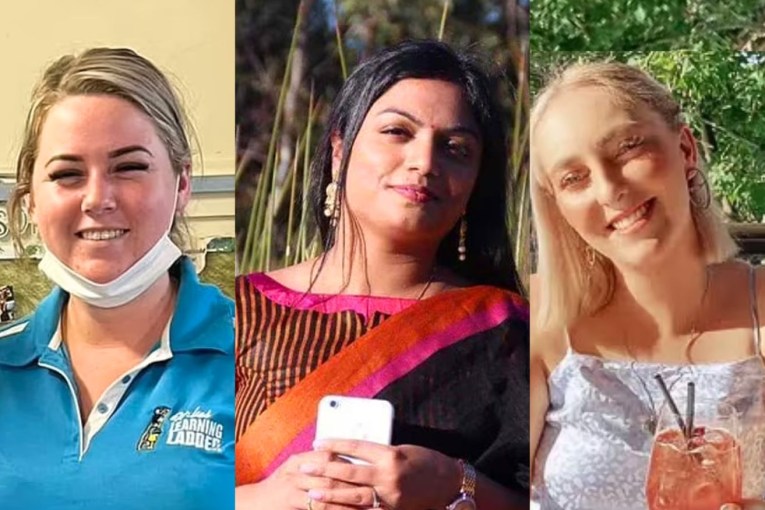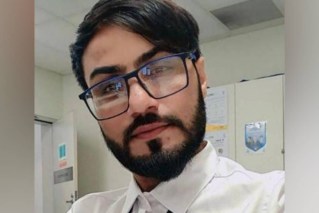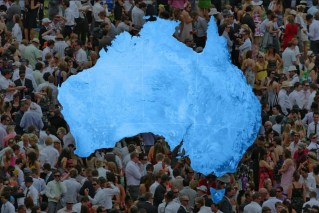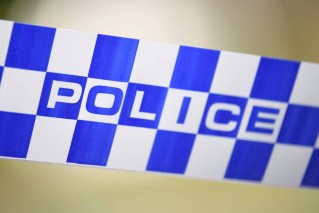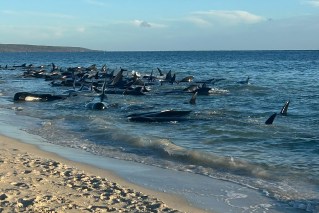Dying for that perfect selfie: Suicidal shutterbugs are killing themselves all over
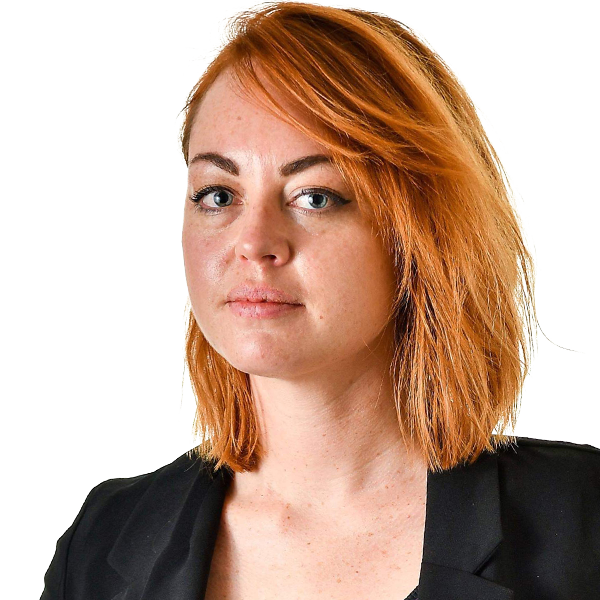
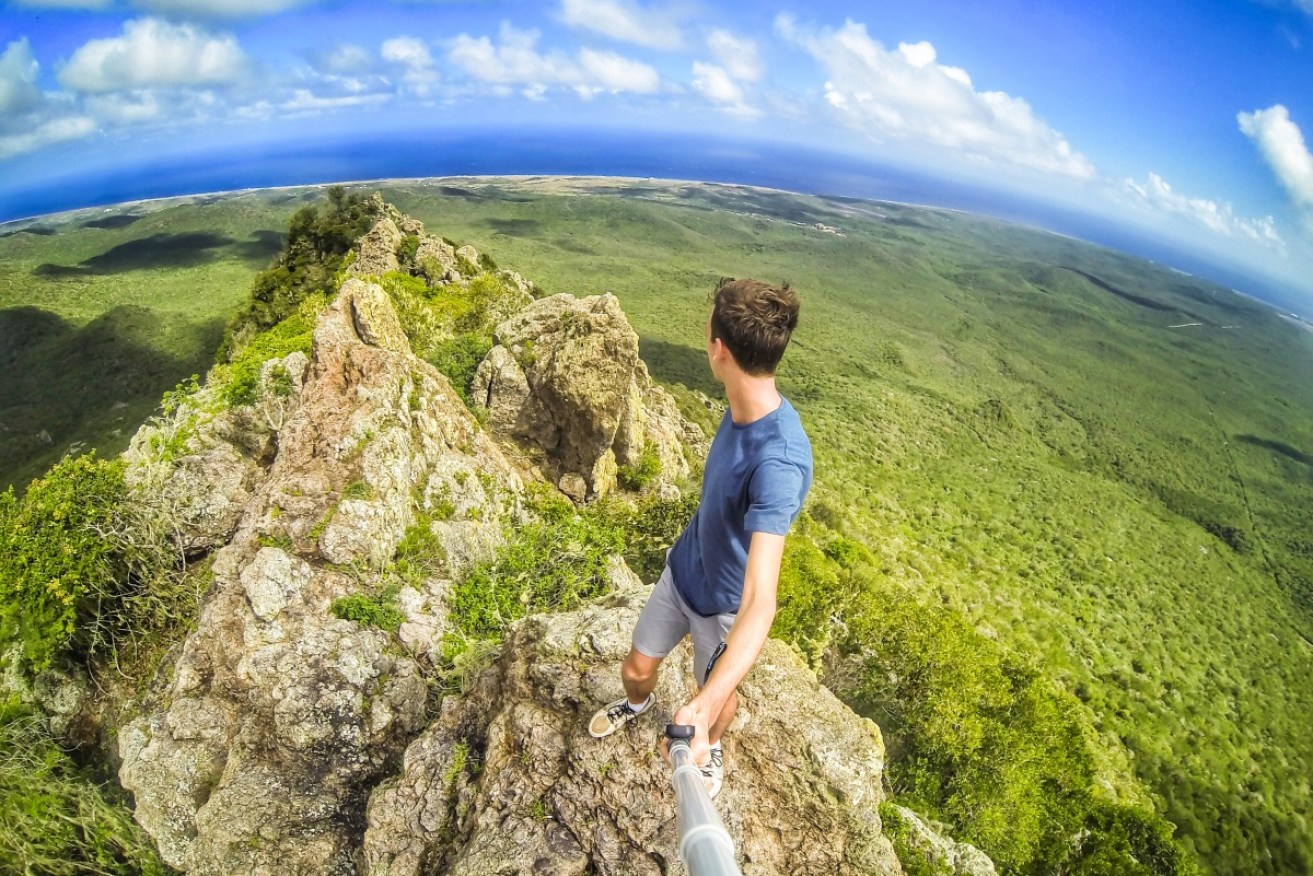
Experts have warned against dangerous selfie behaviour, such as posing on cliff tops. Photo: Getty
Everyone knows to say ‘cheese’ when your photo is taken, but a leading international public health researcher thinks ‘deceased’ might be a more appropriate word after compiling worldwide statistics on the number of people who kill themselves taking selfies.
Indian epidemiologist Dr Agam Bansa and his team found an astonishing 259 people have fallen victim to their own reckless risk-taking over a recent six-year period while attempting to capture the perfect selfie.
Some strayed too close to wild animals, others fell off cliffs, drowned or were hit by cars, trucks, trains or buses. In the US, self-inflicted gunshot wounds topped the tally of stupid ways to die.
One self-appointed victim was drown by a walrus and quite a few lemming-like lens lovers touched high-voltage power lines, which is a sure way to ruin an otherwise neat Instagram post.
Dr Bansa believes authorities should begin signposting “no selfie zones”, as is already happening in Russia and India, where self-absorbed shutterbugs are specifically prohibited in several high-risk locales.
“From October 2011 to November 2017, there have been 259 deaths while clicking selfies in 137 incidents,” Mr Bansa revealed in the latest Journal of Family Medicine and Primary Care
“The mean age was 22.94 years. About 72.5% of the total deaths occurred in males and 27.5% in females.
“The highest number of incidents and selfie-deaths has been reported in India, followed by Russia, United States, and Pakistan.”
Only this week in a case reeking of tragic irony, an Indian couple who had used their Instagram posts to warn against dangerous selfies fell to their deaths in Yosemite National Park in the US.

Travel bloggers Vishnu Viswanath and Meenakshi Moorthy paid dearly for not following their own advice. Photo: Wayback Machine
“Is our life just worth one photo?”, asked the post by aspiring travel bloggers Vishnu Viswanath, 29, and Meenakshi Moorthy, 30.
“Selfies are themselves not harmful, but the human behaviour that accompanies selfies is dangerous,” he writes.
“Individuals need to be educated regarding certain risky behaviours and risky places where selfies should not be taken.”
In June, an 18-year-old American tourist died after losing his footing while attempting to photograph whales passing by Cape Solander at Kurnell, south of Sydney.
Also in June, an Australian couple were reportedly taking selfies in Portugal when they fell off a cliff and died.
Dr Bansa’s report, Selfie: A boon or bane?, found the number of annual selfie-related deaths reported grew from just three in 2011, to 93 in 2017, peaking at 98 in 2016. Those figures, though, could be much higher because his team surveyed only reports written in English.
The beginning
In one of the first selfie deaths, recorded in 2011, two teenage girls died and a third was seriously injured after being hit by a train in the US.
The trio were taking photographs by the train tracks, with one uploading a photograph to Facebook shortly before her death, captioned “Standing right by a train ah haha this is awesome”.
According to police reports, the girls did not realise two trains were coming from opposite directions, and were caught between them.
Selfie safety implemented
In January, 2015, two young men posed for a selfie in the Urals in Russia with a hand grenade. In a moment perhaps only Charles Darwin could fully explain, one pulled the pin and all died as a result.
Several months later, a 21-year-old Moscow woman shot herself in the head while posing with a pistol. She survived, albeit with serious injuries from the incident.
A wave of selfie-induced injuries that year prompted Russian authorities to launch a “safe selfie” campaign featuring slogans like “a cool selfie could cost you your life” and “even a million ‘likes’ on social media are not worth your life and well-being”.
When animals attack
In 2016, a Chinese man was posing with a walrus at a zoo in the country’s north-east when the animal turned on him, dragged him into a nearby pool and held him under until he was dead.
Across the Pacific that same year, a woman was gored by a bison in Yellowstone National Park earlier this year. She survived the attack.
Canada took precautions in 2015, issuing warnings at Banff National Park to not take photographs with grizzly bears. Yes, some people really need to be told that — not that it does much good.
Parks Canada has since been forced to reiterate the warning, as more and more “bear selfies” keep appearing on social media.
Safety-proofing the selfie
“‘No selfie zones’ areas should be declared across many tourist areas, specifically places such as water bodies, mountain peaks and over tall buildings to decrease the incidence of selfie‑related deaths,” Dr Bansa’s study recommends.
Selfie bans have been established in Mumbai and Indonesia, and Russia’s safe-selfie signage can be found across the country.
In India, an app alerts users when they’re in a “dangerous selfie” zone, and advises them against the activity. It draws on phone-location data, and even recognises elements in the background of the photo – water, cliffs – to alert the potential snapper.
“Our study has enlisted the largest number of selfie deaths and incidents to date,” Dr Bansa’s report concludes, noting “this is just the tip of iceberg.”

